
Arquivo para a ‘Astronomia’ Categoria
The evolution of stars and white dwarfs
The evolution of a star like the Sun goes from a giant to a supergiant phase and ejects a planetary nebula and then transforms into a white dwarf when it is losing its energy and brightness.
phase and ejects a planetary nebula and then transforms into a white dwarf when it is losing its energy and brightness.
The basis of stellar evolution calculations is called Hydrostatic Equilibrium whereby the pressure of the gas counteracts gravity in most of the lives of stars, since if there is no such dynamic equilibrium or time it collapses, so stars have nuclear reactions at some stage in their evolution, the ones that don’t have are brown dwarfs.
Using the ALMA radio observatory in Chile, which study a dozen red giants, the evolutionary stage at which stars approach death, they release an enormous amount of energy, producing a constant stellar wind, ie, ejecting a stream. of particles that throws the mass of the star itself in all directions, and these are the bases of its spectacular images.
If they were solitary nebulae, they would only have concentric shapes, but the presence of other companion stars and even planets that orbit the red giants, the influence of their fields ends up forming other images, influenced by the surrounding objects, giving specific configurations and colors.
One of the project scientists Carl Gottlieb, co-author of the study “(Sub)stellar companions shape the winds of stars evolved” said: “We now have an unprecedented view of how stars like our Sun will evolve during the last stages of its evolution”, this is of course on a scale of millions and even billions of years.
Palaeontologist and theologian Teilhard Chardin said that on the scale of the Cosmos: “only the fantastic has the condition to be true, planetary nebulae form incredible cosmic images that look more like divine paintings and are formed around a star that has reached the giant stage red, and recently scientists discovered why their shapes are unique.
But what are black holes ?
Black holes are regions in space-time (neither space nor time are absolute as idealists think) where the gravitational field is so intense that nothing we know, no particle or electromagnetic radiation like light, can escape it, Einstein’s theory of general relativity foresaw this as calculating an extremely compact mass that would deform spacetime to form a black hole.
as idealists think) where the gravitational field is so intense that nothing we know, no particle or electromagnetic radiation like light, can escape it, Einstein’s theory of general relativity foresaw this as calculating an extremely compact mass that would deform spacetime to form a black hole.
On April 10, 2019, a gigantic black hole was “photographed” (figure), nestled in the heart of the Messier 87 (M87) galaxy located 55 million light years away was photographed as a dark circle surrounded by a flaming ring.
This photo actually used a computational algorithm, as scientists can’t directly observe with the telescopes they use to detect other bodies using X-ray, light or other forms of electromagnetic radiation, but can infer by detecting interference in bodies next to matter nearby, so if a black hole passes through a cloud of interstellar matter, it will draw the matter inward in a process known as accretion, it first heats up and then is torn apart as it goes towards it, thus having a dramatic interference in the bodies in its vicinity firing powerful bursts of gamma rays.
Black hole formation is so far known as a result of stellar collisions, shortly after launch in December 2004, NASA’s Swift telescope observed powerful flashes of light that were gamma-ray bursts, and shortly after the Chandra event and the Telescope NASA’s Hubble Spacer collected “afterglow” data from this event which led scientists to conclude that powerful explosions occur when a black hole and a neutron star collide, producing another black hole.
Even though the basic process of formation of black holes is known, a mystery remains that they exist on radically different scales, spread across the universe, on the one hand there are many remnants of massive star explosions, they are generally 10 to 24 times larger in “stellar mass” than the Sun, others are small and difficult to detect, but scientists estimate that there are ten million to one billion of these holes in the Milky Way alone.
At the other extreme are “supermassive” black holes that are millions to billions of times more massive than the Sun, astronomers believe they may be at the center of all large galaxies, including our Milky Way, observation is possible from the effects in the stars and in the gases close to it.
Planets, ExoPlanets, Brown Dwarfs and stars
Planets as we know them are celestial bodies that revolve around a gravitational field composed of at least one sun (there may be more than one), while the exoplanet orbits a star that is not a sun, until September 21, 2021, 4841 exoplanets were known in 3578 systems, with 796 systems having more than one planet.
around a gravitational field composed of at least one sun (there may be more than one), while the exoplanet orbits a star that is not a sun, until September 21, 2021, 4841 exoplanets were known in 3578 systems, with 796 systems having more than one planet.
A star is generally more than 80x the mass of Jupiter, however there are smaller and less bright stars as they get older, they have a mass 13 to 80 times that of Jupiter, and astronomers have already found about 2,000 in our galaxy, the Milky Way.
In general brown dwarfs are new, however it was recently discovered, by chance like most astronomical discoveries, a body called WISEA J153429.75-104303.3, with more than 13 million years, as it was fortuitous its discovery was nicknamed “The accident”.
Age is interesting because it can tell us something about the origin of the universe, or the origin of this universe in case there is a multiverse, but due to its age it will give many clues.
A brown dwarf is a body larger than any planet, but too small and too cold to be a star, this is because the dwarf does not have enough mass to fuse hydrogen in its core, and thus release stellar energy, with age it gets colder.
The brown dwarf has different characteristics than the others, it doesn’t even have the faintest glow (see below for a detection image), and this intrigued scientists, said Davy Kirkpatrick: “This object defied all our expectations”, one of the co-authors of the discovery Published in the Astrophysical Journal Letters.
Two other surprising facts about the “Accident” is that it is about 53 light years away from the Sun, almost neighbor to the Solar System, and it travels through the galaxy very fast, at about 207.4 k/s, or , 25% faster than any other brown dwarf.
The mysterious universe makes us not only think about the origin and destiny of everything that exists, but also its originality and beauty that emanates from something superior to us.
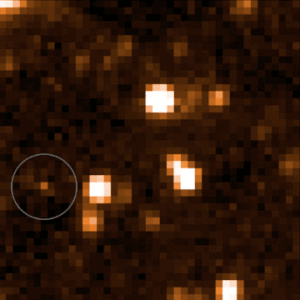
The divine environment and the human phenomenon
Chardin’s worldview on the human phenomenon ranges from cosmogenesis, the origin of the universe and of life to the complexification of nature and the place of man in it, what the pandemic shows is that this complexification grows and even science has limits to deal with it, however, this pandemic can bring new horizons, when it thinking and clarifying it needs science.
cosmogenesis, the origin of the universe and of life to the complexification of nature and the place of man in it, what the pandemic shows is that this complexification grows and even science has limits to deal with it, however, this pandemic can bring new horizons, when it thinking and clarifying it needs science.
Among his various works, Teilhard Chardin makes a singular journey between The divine environment, written between November 1926 and March 1927 and the Human Phenomenon, written between July 1938 and June 1940, which form an “inseparable whole” also says edition I have of Editorial Presença de Lisboa, Portugal.
Singular because it transits from the divine to the human, as the names of the works attest, without slips or ravages, it shows us the “need for the connection between science and religion equally affirmed by Einstein”, an expression by Helmut de Terra, friend and admirer of Chardin. Chardin initiates the divine environment by realizing “the confusion of religious thought in our time” (page 41) and attests that the man of our time “lives with the explicit awareness of being an atom or a citizen of the Universe” (idem).
The timeliness of the text is because the author affirms at the beginning of his book something that has a lot to do with our days, a collective awakening that a beautiful day “makes each individual aware of the true dimensions of life, necessarily provokes in the human mass a profound religious shock, both to slaughter and to exalt ”(ibidem).
This is because the world is too “beautiful: it is to him and only to him that they should worship” (p. 42). What is then the “divine environment”, the world (in our case we explore the universe’s worldviews) will not be more and more fascinating and it would not be and it would be “eclipsing our God” (idem), and there is a connection, in the view of part of Christianity, between God and matter, the Eucharist, she and she alone can create a real sense of reconnecting us to the divine, “this is my body and my blood” said Jesus, and those who eat will have access to eternal life.
Chardin says “the slowly accumulated tension between Humanity and God will reach the limits set by the possibilities of the World, and then it will be the end” (p. 177)… that we must wait not as a catastrophe but as an“ exit ”to the world to which we must collaborate with all our Christian forces without fear of the world, because his enchantments could no longer harm those for whom he became, in addition to himself, the Body of the One who is and the One who comes ”.
Chardin, Teilhard. (no year). O meio edivino: ensaio sobre a vida interior (The divine environment: I teach about the inner life). Lisbon: Editorial Presença.
Man’s place in nature
Edgar Morin we’ve already done some posts here. However, we want to dialogue with the anthropocentric concept that dominates many studies and increasingly we see that it is a limitation since nature has its own course, and the brutal interference of man can modify and harm this course.
want to dialogue with the anthropocentric concept that dominates many studies and increasingly we see that it is a limitation since nature has its own course, and the brutal interference of man can modify and harm this course.
According to Ways (1970) cited in Chisholm (1974) there is a tendency in Western epistemology to objectify nature to see it “from the outside”, and this is responsible for the arrogant and insensitive way of dealing with the natural world, according to the author’s own attitude of separation of man from nature constitutes the basis of the growing human knowledge of nature, being, therefore, an anthropocentric interpretation of the evolution of the natural world.
On the other hand, the complexification of nature in man is undeniable, as an animal that is aware, or in other words aware of its own conscience, which can lead to another extreme, which is the “internalization” where culture and nature are confused , where subjectivism can be a responsible trend for this aspect.
The paleontologist Teilhard de Chardin, in his work “The Human Phenomenon”, observes that there is no anatomical or physiological trait that distinguishes man from other higher animals, on the other hand, it has the zoological characteristic that makes it a being apart in the animal world. , is the only one that inhabits the entire planet, another characteristic that comes from its form of consciousness is its organization as consciousness and thought structure, which Teilhard de Chardin calls “noosphere”, a sphere of thought that is also world-wide.
As for man, it remains to be seen, and even science does not know, if it is a mere superficial accident that has happened or if there is an intention in him since the Universe was created, whether Big Bang or not, reflects Teilhard Chardin: “that we should consider it – about to sprout from the smallest fissure anywhere in the Cosmos – and, once it has arisen, unable to waste all the opportunity and all the means to reach the extreme of everything it can reach, outwardly of Complexity, and inwardly of Consciousness” (CHARDIN , 1997).
CHARDIN, T. (1997) Man’s place in nature, trans. Armando Pereira da Silva, Ed. Instituto Piaget, Lisbon.
CHISHOLM, A. (1974) Ecology: a strategy for survival. Rio de Janeiro: Zahar.
The human purpose and its finitude
Unlike the machine that has the environment as its purpose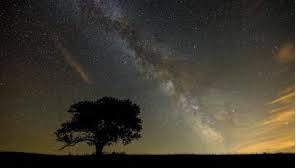 (see previous post), the human purpose is to reaffirm existence through the perpetuation of life, and also everything that is alive can and should defend this existence, as explained by Edgar Morin:
(see previous post), the human purpose is to reaffirm existence through the perpetuation of life, and also everything that is alive can and should defend this existence, as explained by Edgar Morin:
“The impositions that inhibit enzymes, genes, and even cells, do not diminish a freedom that does not exist at this level, as freedom only emerges at a level of individual complexity where there are possibilities of choice; they inhibit qualities, possibilities of action or expression” (MORIN, 1977, 110), machines are not without purpose, but whatever they are, they are means.
But this freedom when it is at the human level, and it is “only at the level of individuals who have possibilities of choice, decision and complex development that impositions can be destructive of freedom, that is, become oppressive” (idem) .
It is the development of human culture that can develop these potentialities, as Morin says: “It is certainly culture that allows the development of the potentials of the human spirit” (ibid.), it depends, therefore, on the development of a culture of peace, solidarity and of preserving life within the human spirit.
Morin will say in the chapter of his conclusion on the “complexity of Nature”, that in the so-called “animistic” universe, or mythological in the case of the Greeks, “human beings were conceived in a cosmomorphic way, that is, made of the same fabric as the universe.” (MORIN, 1977, p. 333).
This presence of what Morin calls “generativity”, the animated and animating beings, all existing within the universe, implied a communication between the spheres: the physis, life and anthroposocial, if we extend these concepts to Sloterdijk’s spherology: anthropotechnic.
But as we reasoned a few posts ago, the separation of physis into nature (animate) and physics (inanimate) not only “disenchanted the universe, but also desolated it.”
He completes his reasoning with a sentence that shows our multiple crises and nights: “There are no more geniuses, nor spirits, nor souls, nor soul; there are no more gods; there is a God, strictly speaking, but elsewhere (the emphasis is on the author); there are no longer existing beings, with the exception of living beings, which certainly inhabit the physical universe, but come from another” (idem).
Thus he concludes that nature was returned to poets and physis to the Greeks, and so the universe of techniques (which are means) dominated life (which is purpose) and so “science and technique generate and manage, like gods, a world of objects” (MORIN, 1977, p. 334).
It does not let finalism (or fatalism) be the last word: “it is from the crisis of this science that new data and notions that allow us to reconstruct a new universe come out” (idem), quantum physics, from the third included (the quantum between two quanta) and entropy/neguentropy are renewed.
Every universe is “anima”, the theologian Teilhard Chardin also agrees with this thesis, and also that life is the complexification of the universe, in which the human phenomenon is its apex.
In addition to the animist or mythological interpretation for these purposes of life, which is death and life in life in death, a Heraclitian principle also cited by Morin, the Christian reflection on the passages already cited above about who Jesus is (Mk 8,27 and Mc 9,31), and He must suffer greatly.
It is complemented by the question about abandoning what is the transitory purpose of life (therefore only means) and if it is not useful for the ultimate purpose (and therefore, they are only means and should be relativized) if your hand, your foot or your eye leads you to sin (forget the ultimate end of human life which is the eternity of life) it is better to lose them to have the living purpose.
But his last word is to accept those who see this reality differently, if they are not against us, it is in our favor (Mk 8, 40) and (Mk 8,41) and “whoever gives you a drink of water , because ye are of Christ, he will not remain without receiving his reward”, so many can cooperate with the growth of the human anima, with the life and living Nature on which we all depend.
MORIN, E. (1977) The nature of NATURE. Lisbon PUBLICATIONS EUROPA-AMERICA, LDA.
The complexity and its genesis
As we penetrate into the increasingly studied man-machine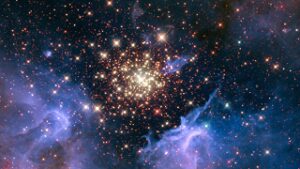 relationship, it is necessary to understand what has been theorized about nature so far, which means forming a model for nature, and in turn, making human and non-human collectives and individuals, composed in a culture, or in a tradition, or in a more general scope, what is articulated and what is only configured.
relationship, it is necessary to understand what has been theorized about nature so far, which means forming a model for nature, and in turn, making human and non-human collectives and individuals, composed in a culture, or in a tradition, or in a more general scope, what is articulated and what is only configured.
That is, the model may be subject to error or failure according to the areas implemented and can be determined by them, but by re-articulated it within its own history of creation, not naturalization but the culturalization of concepts, we understand the model that we have a priri, and that it is not always nature itself.
The one who penetrated deeper into this idea was Edgar Morin and from there conceived his method and developed complexity, conceiving nature requires ultimately preserving the network from which he conceptually emerged and correcting where the concepts were separated, identifying a network.
So it’s about identifying the culture that developed around nature, Morin puts it in lowercase to differentiate it from Nature itself in capital letters which is all that was said here and so the complex develops, which means what was “fabric together”.
What we then say about nature is the culture that developed around the idea that we could dominate it, but one of Francis Bacon’s maxims is that “we can’t dominate it if we don’t understand”, modern quantum physics, Modern astrophysics have shown how naive the models of Newton, Galileo and Copernicus were, but they were woven together to arrive at the new models proposed today.
Edgar Morin explains the “disorder of order” starting with two quotes to say that the order: “simplified laws invented by the wise” (Brillouin, 1959, p. 190), abstractions taken by the concrete (Whitehead, 1926)” (MORIN, 1977 , p. 76).
It is now, according to Morin, squeezed “between microphysical chaos and the diaspora”, and it matters to know how it was born: “How did it develop from scratch? How to conceive of it despite, with and in disorder? How can she appear to us as the sole sovereign of the universe if it is now so difficult to justify her existence? (idem).
What is the genesis? “the concept of order, in classical physics, was Ptolemaic. As in Ptolemy’s system, where suns and planets revolved around the Earth, everything revolved around an order”. (MORIN, 1977, p. 82).The Copernican revolution, however, was not the final word: “Hubble took away the entire astral or galactic center. And here is the great Meta-Copernican and Meta-Newtonian revolution, which went underground from Carnot and Boltzmann to Planck, Bohr, Einstein and Hubble. There is no longer a center of the world, whether it is the Earth, the sun, the galaxy or a group of galaxies” (idem)
And he continues: ”There is no longer an unmistakable axis of time, but an antagonistic double process that emerged from the same and single process. The universe is, therefore, simultaneously polycentric, centered, decentered, disseminated, diasporizing…” (ibid.).
MORIN, E. (1977) The nature of NATURE. Lisbon PUBLICATIONS EUROPA-AMERICA, LDA.
The grain of wheat dies to give life
Perhaps the deepest cosmic mystery is the death and appearance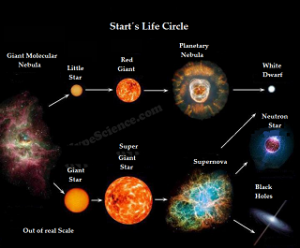 of stars, planets, comets and so many wandering stars in the Universe, and also in microscopic life it is like this, the virus needs a cell to live and there it can cause death or life, this is the cosmic-paschal mystery.
of stars, planets, comets and so many wandering stars in the Universe, and also in microscopic life it is like this, the virus needs a cell to live and there it can cause death or life, this is the cosmic-paschal mystery.
Chardin said about the Universe that on the Cosmos scale: “only the fantastic has the condition to be true”, the nebulae are stars with a simple composition of Helium and Hydrogen (they are the most common elements in the universe), when a gas contracts it heats up and the temperature depends on the density of the gas, the burning of Hydrogen will cause a nuclear fusion and a sun will appear, if it is not enough the so-called brown Dwarfs will appear, they are more planets than stars.
When the star gets colder and the density decreases by 8 times the mass of the sun, it becomes a White Dwarf, however as its nuclear fuel heats the temperature of its center, the stars expand to become the so-called Red Giants, between the white dwarfs and the Red Giants are planetary nebulae that are not really planets.
These are just one of the spectacular puzzles of the Cosmos, there are still neutron stars, black holes, asteroids and comets and now the newly discovered wandering planets that spin outside the circle of their main star and roam the immense universe.
And what to talk about the various theories about black holes, the most accepted theories is that what remains of the star’s death generates the neutron stars while if the mass is greater than 3 times the Sun generates a black hole, but there are other theories .
Death and life expressed in Christian cosmology may seem distant, but for Chardin it was not, since he defined the universe as “Christocentric”, that is, he all lives a paschal mystery.
So the biblical passage, especially in John 12: 22-33, has a text very close to these enigmas when Jesus says that the Son of Man will be glorified (it is interesting because the Son of God has the human dimension in the mouth of Jesus), and he says he is distressed, and that “what shall I say? ‘Dad, deliver me from this hour?’ But it was precisely this hour that I came. ”
And he says he came to glorify the Father, and this when he approaches his death on the cross, and he says when he is lifted up from the earth, I will draw everyone to me, indicating that the path of salvation exists, and the whole universe goes in this direction, thus man and ours. planet will also tend to this, as via Chardin.
In simpler words, Jesus explains: if the grain of wheat does not fall into the soil and die, it produces fruit.
The human future and unity
Several points of Teilhard Chardin’s thought coincide with the new  theological currents that arise in the religious milieu, especially in the Catholic, but Chardin opened his spirit even more when he practically migrated to China, the environment and Eastern philosophy influenced him.
theological currents that arise in the religious milieu, especially in the Catholic, but Chardin opened his spirit even more when he practically migrated to China, the environment and Eastern philosophy influenced him.
His originality is as much in the evolutionary synthesis of his vision, as in several aspects of a futuristic eschatology that covers the entire Cosmos and whose convergence he calls “Omega”, which is an individualized but not isolated force, different from authors who stop at criticism to the problem of contemporary individualism without understanding that individuation tends to this “Omega point” futuristic, evolution chases.
Some authors understand the Cristosphere as a recapitulation of everything, say some theologians, but the evolutionary process culminates like man, but it does not end with man, the universe, man and woman, the historical trajectory, everything responds to a path for the Parusia of the Lord, and it is inevitable and the highlight of a Christian eschatology, and to deny the end of everything is to deny the eschatological process or at least not fully understand it.
So says U. Zilles about Chardin: “It is the risen Christ, who incorporates the world and humanity into the Mystical Body, in the finish of the Total Christ”, so this means that the Earth and the Universe will be prepared for the Parusia of the Lord (or the return of Christ), in full eschatology.
As a force of individualized action Omega is not subject to time and space (current physics has already shown these concepts as not absolute), so properties such as autonomy, actuality, irreversibility and transcendence are not subject to temporal actions, but to Omega.
Chardin explains that the multiple ecological, physiological, psychological factors that bring living beings together, especially human beings, and that especially environmental, physical and spiritual conditions are extension and expression, at a level of complexity-consciousness energies that they can bring Omega closer together.
Let it be said in passing that everything is in the various passages of Jesus (approaching the humble, dialogue with public sinners and finally handing over to the hands of the bad religious and politicians of his time), what Chardin wants to say is even further, that if we understand complexity-awareness, we help humanity to make a leap in quality that brings us closer to the Omega point.
Chardin’s phenomenology is radical because Creation is the beginning of phenomena, and the divine always operates in it, present in the actions and laws that govern organisms and living beings: God is at birth and in growth and at the end of all things, […] It does not mix or be confused with the participatory that sustains, animates and connects.” (Rideu, p. 271).
Thus, looking at the phenomena of the universe is looking at greatness and human development. It is not by chance that scientists look for comets, stars and stars from all over the cosmos for signs of life and the origin of life. Creator.
Zilles, U. (2001) Pierre Teilhard de Chardin: Fé e Ciência (Chardin: faith and science). EDIPUCRS, pag. 59-60.
Rideau, E. (1965) O pensamento de Chardin (Teilhard de Chardin’s thought), Ed. Duas Cidades, 1965, p. 271.
The noosphere: from primary matter to complexification.
Teilhard Chardin thus describes the complexification from the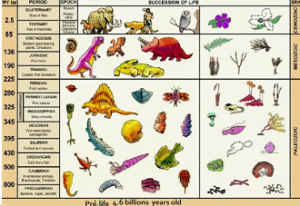 first developments of life, the critical transition from the life of cells to an ultra-complex life:
first developments of life, the critical transition from the life of cells to an ultra-complex life:
“We will probably never find out (unless, luckily, the science of tomorrow manages to reproduce the phenomenon in the laboratory) – History alone, in any case, will never directly discover the material traces of this emergence – appearance – of microscopic out of the molecular; from the organic out of the chemical, from the living out of the pre-living. ” (Chardin, 1965, p. 63)
Although it may seem that nature would have done this preparation alone, it draws attention to the essential originality of the cell, producing something entirely new, and composing an organic multiplicity in a minimum space, although the process may have taken years, each cell has long been prepared to be something original.
It will be through discreet but decisive mutations that occurred for thousands and millions of years, that the complexity of cells and living beings began to be formed, making it possible to perceive “the irresistible developments that are hidden in the weakest slowness, the extreme agitation that is hidden under the resting veil, the entirely new that insinuates itself in the monotonous repetition of the same things ”(Chardin, 1965, p. 8).
It was through the complexification of life that the human emerged, in the beginning God made it from inorganic materials, metaphorically the Bible says about clay, but it is certain that the universe was born before.
So the world of physis (Chardin sees physics in the Greek sense of the word) would be linked to biology, and thinks:
“Could we hesitate for a moment to recognize the evident kinship that links, in its composition and aspects, the world of the proto-living to the world of physical chemistry? I mean, are we not yet, in this first stage of life, but at the core, at least on the very edge of ‘matter’? ” (Chardin, 1965, p. 66)
At the birth of human life, after billions of years after the formation of the universe, a great and decisive mutation will occur, the birth of thought and consciousness, and what Chardin calls interiorization, which in religious terms means the individual soul that is also linked to the collective, the principle of association from the first cells.
The thought and the conscience the notion of person develops, this experience was given thanks to the cerebral development of man, and to the developments of what Chardin calls the Noosphere, the last stage after the Biosphere, the creation and development of life.
Developing and explaining the Chardanian cosmogenesis is a long process that not even fully developed in life, many advances in current astrophysics (many discoveries try to explain the origin of life) help understanding, what is important to emphasize is that the evolution panorama cosmos, not just the Earth, is linked to the development of human consciousness and capacity to connect with the harmony of life.
Chardin, T. (1965). O fenomeno humano (Phenomenous Human). BR, São Paulo : Herder.

